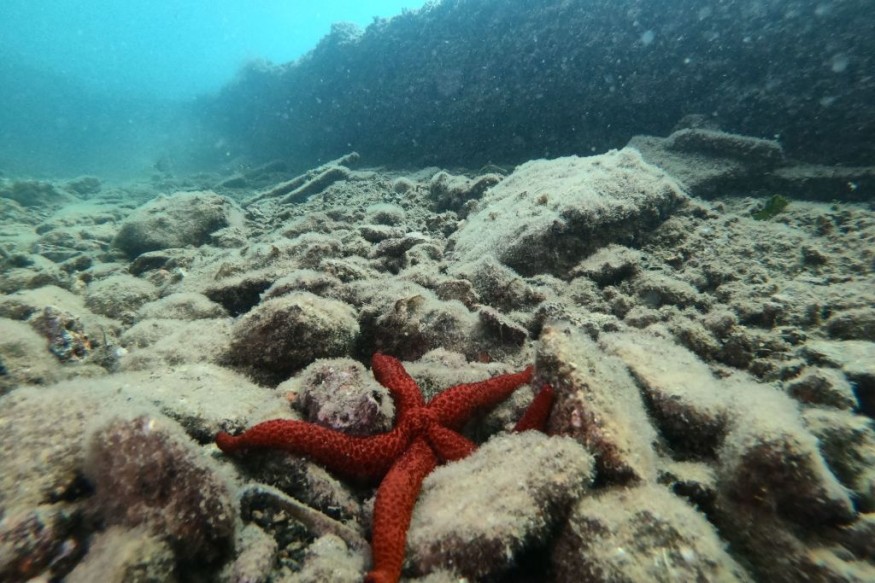
A rare interaction of two sea creatures were captured in the shallow waters of Monterey Bay, California.
A photo of what looks like dozens of colorful starfishes devouring a lifeless sea lion was photographed by award-winning wildlife photographer David Slater.
The sea stars, which are all bat stars (Patiria miniata), seem to be swarming to feed on the dead sea lion on the seafloor in California, ScienceAlert reported.
In the background are most likely California sea lions (Zalophus californianus), or could be Steller sea lions (Eumetopias jubatus), based on the geographical ranges of the two species.
The image of the scavenging starfishes in wide range of colors recently won first place in the category "Aquatic Life" at the California Academy of Science's Big Picture Competition.
The competition features photos of wildlife around the world, illustrating "the rich diversity of life on Earth and inspire action to protect and conserve it through the power of imagery," the academy wrote.
The winning images are exhibited at one of the most prestigious science institutions in the world in San Francisco, California, USA.
"Sea Lion Fall" by David Slater
David Slater is a self-taught photographer who grew up in Florida and shared interest for the water.
He served as a diving instructor at University of Hawaii at Manoa, which strengthened his connection to underwater photography.
Now residing in Monterey Bay, David enjoys cold-water diving and exploring the kelp forests just off the shore.
In his recent photograph, a "melancholic" scene of bat stars encompassing the dead sea lion represents something more than just a meal.
It also exhibited the key role of bat stars in recycling the sea lion into energy and nutrients, and "giving back to the community with which it once swam."
"When the batstars have had their fill, any number of creatures big and small will be able to derive energy and shelter from what's left behind for years to come," David wrote.
Beauty and Adventure in Unexpected Places
On an instagram post, David expressed his utmost pleasure for "taking first place in such a prestigious contest," he wrote.
"The image shows that beauty and adventure can be found in unexpected places," he added.
It is unknown what exactly caused the depart of the creature, but it is suspected that it died of natural causes or anthropogenic factors, such as a vessel strike, plastic ingestion, or entanglement in fishing gear.
However, it is regarded as least concern as California sea lion populations are actually sharply increasing in size.
Meanwhile, bat stars may be under threat due to climate change. The warming sea temperature may be linked to a new disease known as sea star wasting syndrome, which first emerged in Alaska in 2013, according to the National Marine Sanctuary Foundation.
As scavengers, bat stars play an important role in this ocean ecosystem and regulates the food chain.
Sadly, their species is one among others known to be at risk from the disease which is caused by a bacterium, according to Monterey Bay Aquarium.
The disease leads to abnormally twisted arms, white lesions, deflation of arms and body, arm loss and body disintegration, "which is almost always fatal," according to the National Park Service.
Related article : Maldives' Luxurious Floating City is Big Enough to House 20,000 People
© 2025 NatureWorldNews.com All rights reserved. Do not reproduce without permission.





